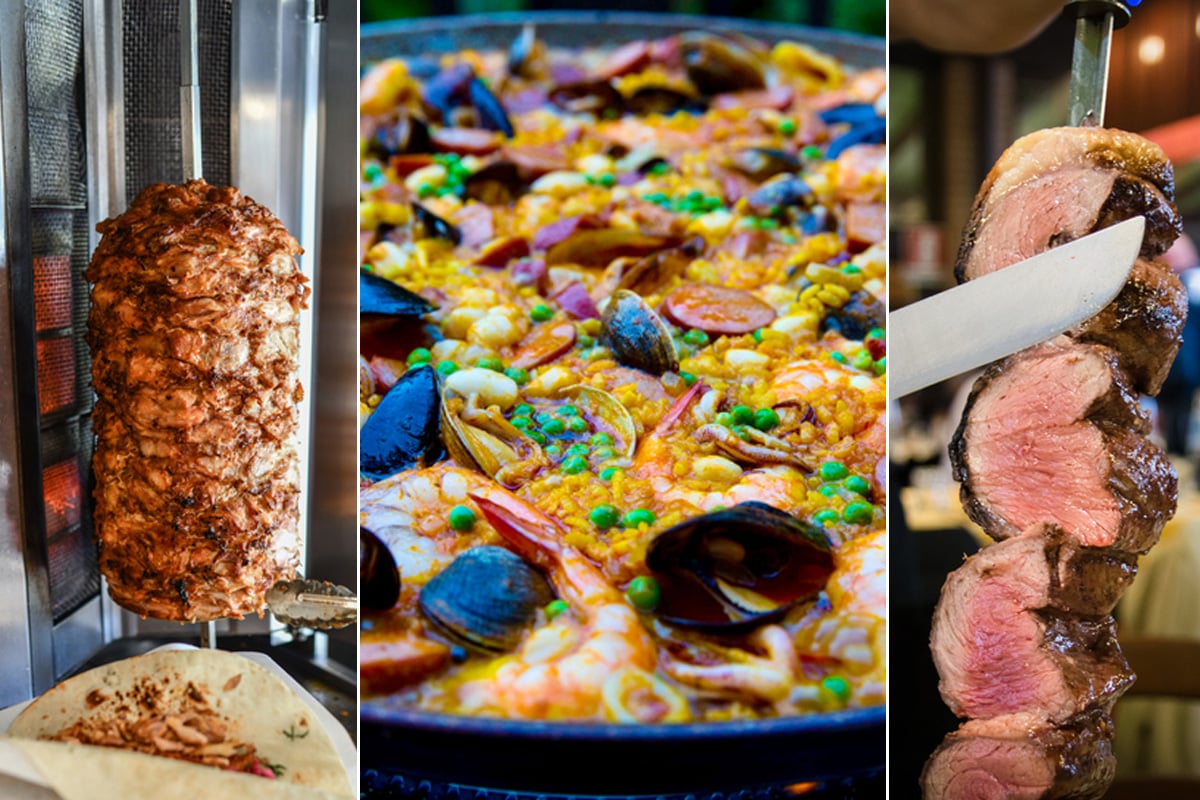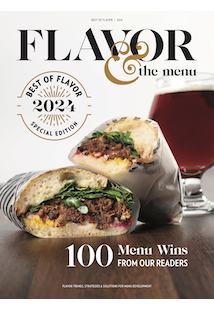
While hot pot and Korean barbecue invite diners to take an active role in preparing the meal, shared dishes can still be an interactive, customizable experience without the cooking component.
The word shawarma means “turning” in Arabic and hints at the dish’s preparation, which involves stacking thin slices of meat into an inverted cone and then slow-roasting on a vertical spit. Because this culinary tradition originated during the Ottoman Empire, shawarma is found in cuisines across the Middle East. In a modern foodservice setting, individual portions of meat are typically cut right off the spit and immediately served to guests, often in a pita or wrap. While it’s a rare restaurant that slices the meat tableside (though they do exist), most purveyors keep the cones in a prominent place to ensure guests see and smell the shawarma.
It’s a winning formula that’s gathering steam, as evidenced by growing fast-casual chains like Ontario, Canada-based Osmow’s Shawarma, which is continuing its U.S. expansion. The concept sells lamb, beef and chicken shawarma in wraps or atop bowls and salads, but its standout dish, the Chicken Shawarma Poutine, provides an unexpected cuisine cross-over. In Los Angeles, Indigenous-owned Xtiosu embraces third-culture cooking with Middle Eastern foods and flavors suffused into authentic Oaxacan fare. Its Chicken Shawarma Taco subs a corn tortilla in place of pita and adjusts the flavor profile through fillings like cilantro, pickled turnip and the restaurant’s signature Arabesque salsa, which incorporates tahini into the classic salsa build.
Like shawarma, Brazilian churrasco cuts a striking figure, but rather than a cone of thinly sliced meat, churrasco features thicker cuts, with picanha (rump cap) especially coveted. At Brazilian steakhouses, the skewers are cooked over embers of charcoal or wood and often served “rodizio” style, wherein servers rotate from table to table, offering fresh-off-the-skewer beef, pork, chicken and sometimes seafood and vegetables.
Thanks to chains like Fogo de Chão and Texas de Brazil, U.S. consumers have some working knowledge of churrasco and its red-green disks, but that’s not to say the category is limited to its formal steakhouse roots. Fire Pit Brazilian Barbecue serves four churrasco meats—pork ribs, short ribs, chicken and picanh—out of a food truck and a food hall in the Maryland suburbs of D.C. The proteins can be part of a plate with sides like rice, black beans and farofa (toasted cassava flour with bacon, onion and spices) or on an Italian sub topped with mozzarella, arugula and the brand’s own mayo-based pit sauce.
A quintessential Spanish dish, paella features a rice base, usually tinted yellow by saffron, and incorporates a variety of vegetables and animal proteins (everything from rabbit and chicken to shellfish and chorizo) based on the region and available ingredients. Although paella can be served in individual portions, it’s often prepared and served in bigger batches, given the time-intensive nature and high-caliber ingredients. Multi-unit brand Barcelona Wine Bar subscribes to this philosophy and offers half, full and double portions of its paella dishes, which include seafood-, vegetable- and meat-centric options. For example, the Paella Salvaje features chicken, chorizo, pork belly, chickpeas, eggs and olives.
Other emerging restaurants are stepping outside the traditional formula to experiment with fresh flavors and ingredients. In Houston, self-described “Euro-Tex” concept Blue Tuba serves a Texas Paella with shrimp, mussels, brisket, chorizo, saffron rice and black beans.







